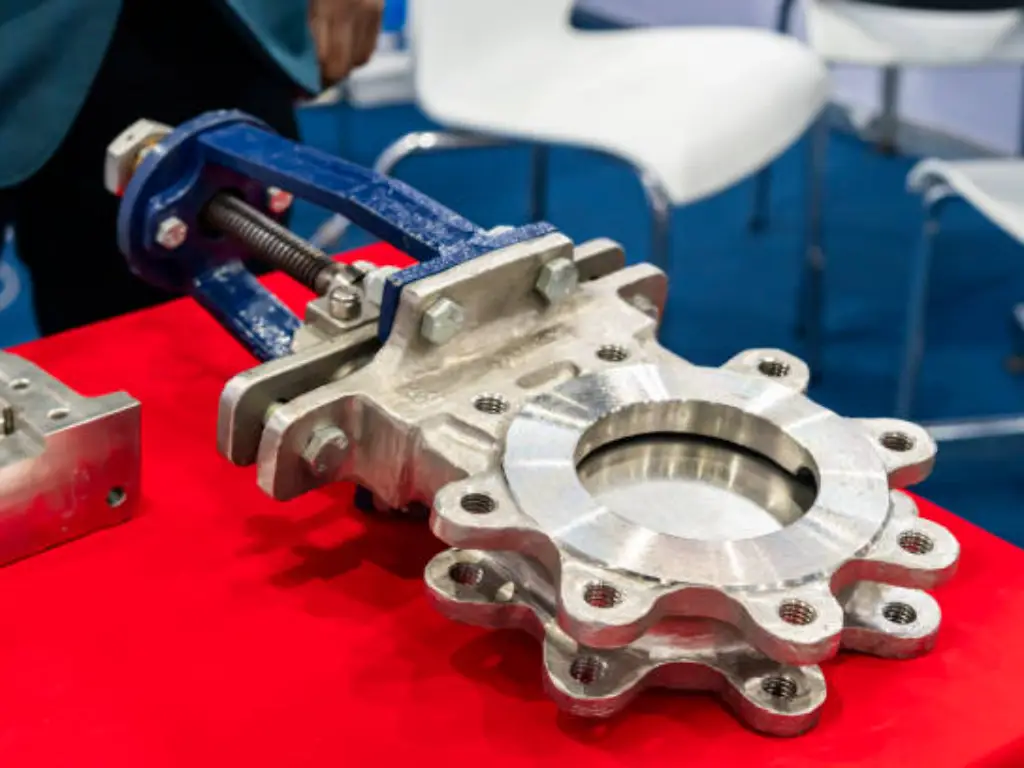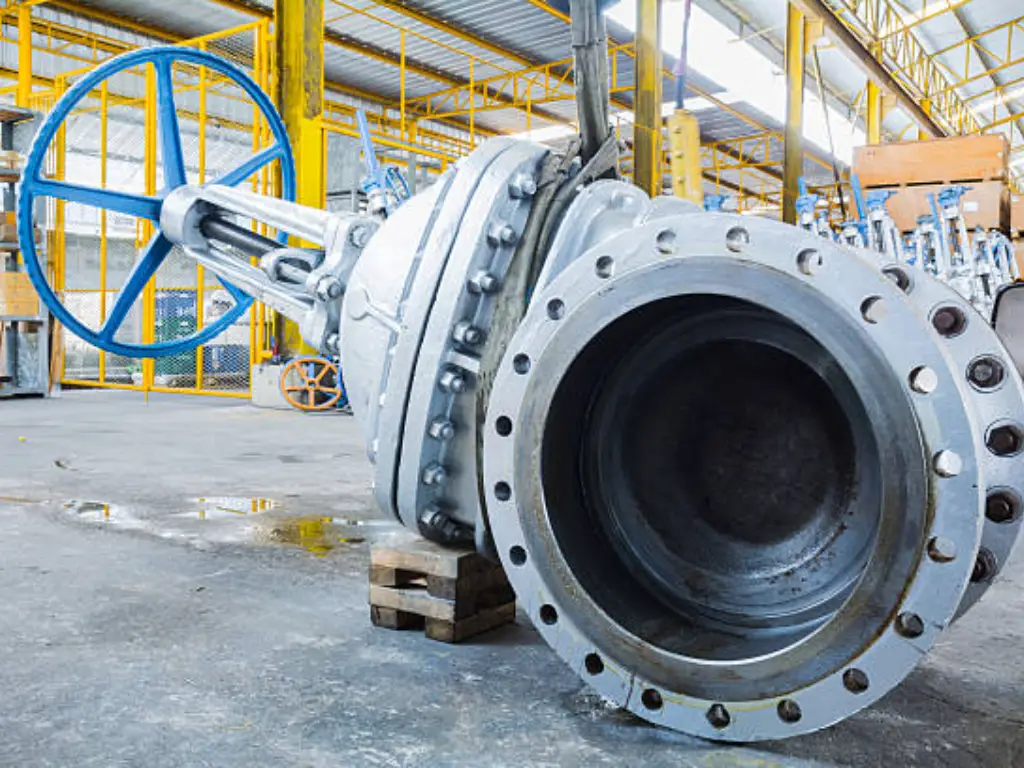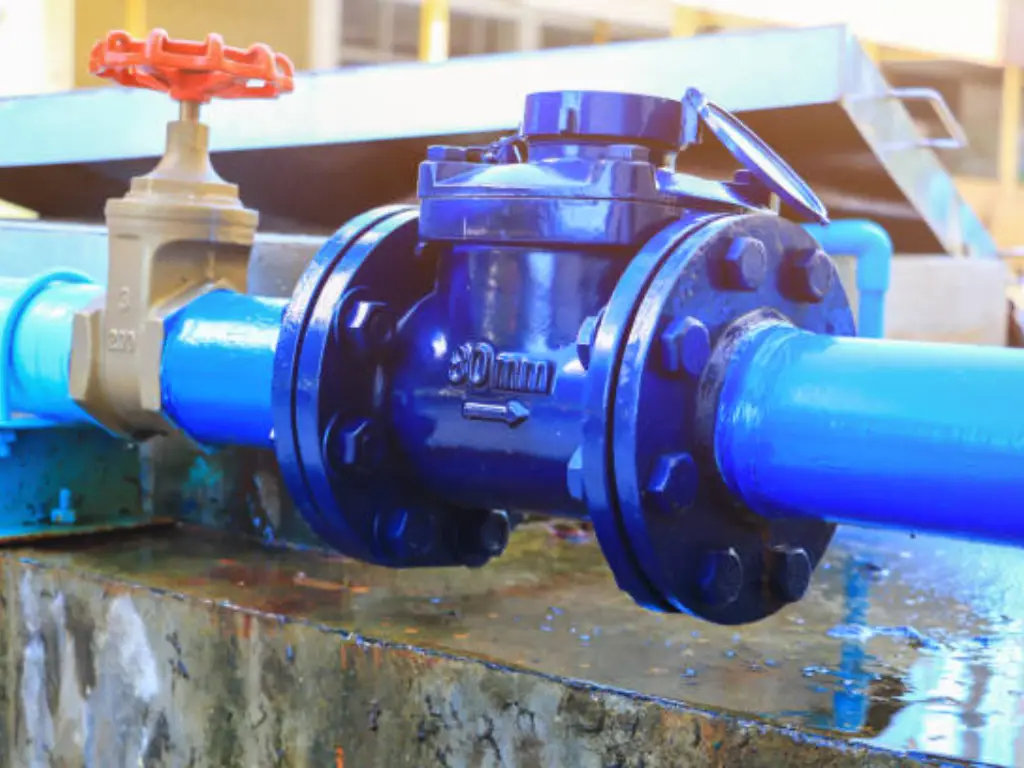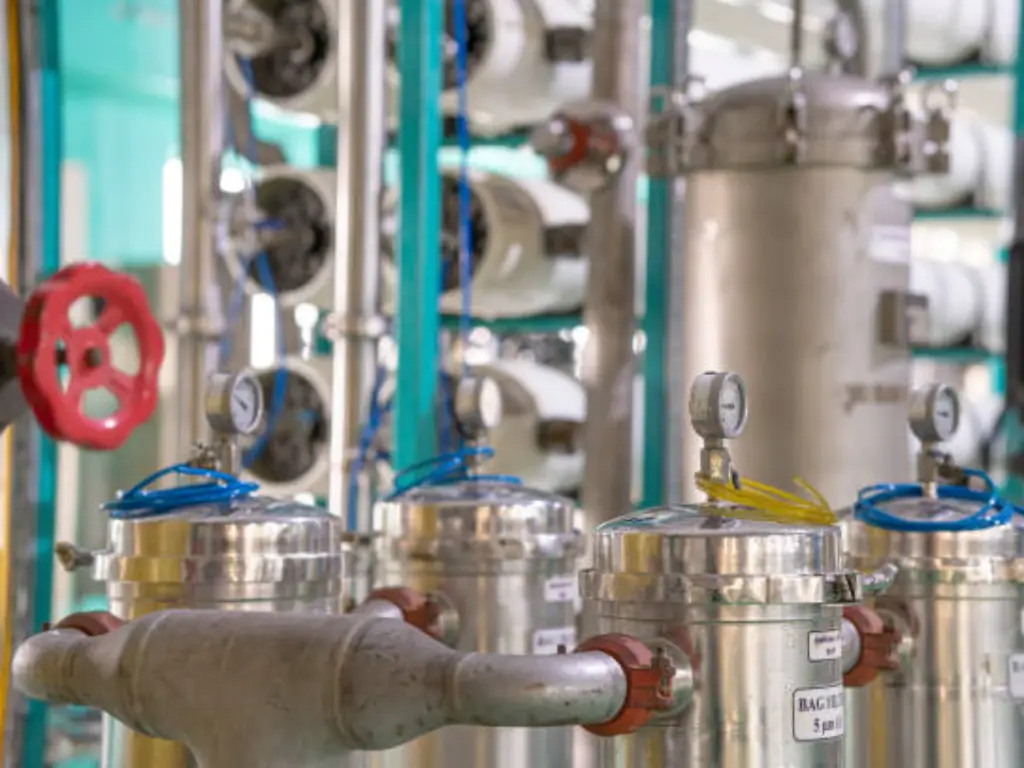Introduction
There are various types of valves, such as globe valves, ball valves, gate valves and butterfly valves. Such types serve different purposes in divergent industries like water treatment, mining sector, paper mills as well as cement manufacturing plants. The most outstanding are knife gate valves that can handle difficult media such as slurry and viscous fluids. Therefore, it is crucial to know the different knife gate valve types in order to choose the right valve for your particular application so that efficiency and reliability can be guaranteed. In this paper, we will examine the different types of knife gate valves and their characteristics, which will guide you in selecting a suitable one according to your requirement.
What is a Knife Gate Valve?

Knife gate valve is a unique type of valve developed for handling highly viscous fluids such as slurry, pulp and wastewater. The gate is designed with sharp edges that can go through denser materials to make a fluid stream steady without any interruption. This makes them particularly important in industries like water treatment, sewage plants, mining, paper industry and cement plants where dealing with such difficult fluids are common.
The working mechanism of knife gate valves involves vertical motion of the gate either to block or permit fluid flow. Whenever opened, fluid flows through the body of the valve since the gate is lifted high. When closed, its sharp edge slices through solids within the liquid forming a tight seal which doesn’t allow leakage. This cutting action helps ensure that even if there are solid particles in a fluid that causes it to close securely and maintain an effective seal thereby reducing chances of blocking. The actuator, which may be manual, pneumatic or electric, operates the movement of this gate. Knife gate valves offer reliable and efficient operation in tough industrial applications by providing robust solutions for handling difficult fluids.
Key Components of Knife Gate Valves

Several indispensable parts constitute knife gate valves which influence their performance and functions. A proper understanding of these components can go a long way in choosing the right valve for specific applications and ensuring that there is proper maintenance.
- Valve Body: The valve is usually composed of an enclosure from which other elements are assembled. Normally, this body is made out of long-lasting substances like stainless steel, cast iron or ductile iron. Stainless steel’s high resistance to corrosion makes it useful for such environments. The feature of the body ensures that the gate withstands high pressures as well as abrasive media.
- Gate: This element cuts through the media and provides a seal. It is made of hardened stainless steel to enhance its cutting ability and durability. Hence, when closed the sharp edge of gate slices through thick and viscous fluids preventing blockages and making sure there is a tight seal always present in it even when closed, thus important in those industries that deal with slurry, pulp etc.
- Actuator: It controls the motion of the gate which determines if the valve is open or shut down. Actuators could be manual (hand-wheel operated), pneumatic (air pressure driven) or electric (motorized). The choice of actuator depends on application specifics including operation frequency as well as need for automation.
- Packing and Gland: The packing in addition to gland guarantees a leak tightness of the gate stem. The most commonly used materials for packing include PTFE or graphite, which can withstand high pressures and temperatures. The packing is pressed against by the gland hence making it seal. Proper maintenance should be done on these parts so that they don’t become leaky over time.
- Yoke and Stem: The yoke provides support for the actuator as well as connecting it to the gate. The stem is responsible for transmitting motion from the actuator to the gate of knife gate valve. These elements are often made out of stainless steel or other hard substances, which can bear all mechanical loads associated with its operation.
- Seat: When a knife valve is closed, there must be some surface that contacts it. This surface is referred to as a seat because it seals off the blade during closure. Often, rubber or resilient materials are employed to make seats that constrict upon deformation creating an effective seal while other applications require metal seats due their toughness and resistance towards wear.
By understanding how knife gate valves work one can easily appreciate its components and how they can be maintained for better performance in different industrial applications.
Comprehensive Guide to Different Knife Gate Valve Types

Different types of knife gate valves are made to meet the requirements of various industries and can handle different types of media. In this section, we will explore some of the major types of knife gate valves that are based on their operating environment, media handling capacity, sealing performance and other special functionalities.
Application Environment and Conditions
Conventional Knife Gate Valves
The most popular type among them is conventional knife gate valve which finds applications in a wide variety of fields; these valves are usually made from cast iron or ductile iron or even stainless steel with a simple gate design that moves up or down vertically for unidirectional shut-off. They come in sizes ranging from DN 50 (2 inches) to DN 600 (24 inches) as well as regularly conform to pressure ratings up to PN 10 (150 psi). Such devices can be used at moderate pressures. Besides, these products can have fluid temperatures up to 200°C (392°F), depending on body material and seat material. Conventional knife gate valve is suitable for water treatment plants, paper mills, food processing industries.
Severe Service Knife Gate Valves
On the other hand, severe service knife gate valves are designed for operation under severe conditions such as high pressure environments with abrasive media at extreme temperatures. These valves generally consist of robust materials like hardened stainless steels or alloy steels hence they guarantee a long life cycle. Also they provide enhanced sealing mechanisms even under harsh conditions so leakage would not occur. These valves have dimensions between DN 50 (2 inches) and DN 900 (36 inches) while having a maximum working pressure up to PN 40(600 psi) and an operating temperature range up to 400°C (752°F). Consequently, they are commonly utilized in mining industry and power plants where reliability and performance matters most.
Media Handling Capabilities
Slurry Knife Gate Valves
Slurry knife gate valves are particularly made to handle slurry; a mixture of solids and liquids that can be highly abrasive. These valves are manufactured from ductile iron or wear-resistant alloys and feature a heavy duty gate and reinforced seat capable of withstanding the abrasive nature of slurry. They come in sizes ranging from DN 50 (2 inches) to DN 600 (24 inches) and normally rated up to PN 16 (250 psi). Slurry knife gate valves can work at fluid temperatures up to 150°C (302°F), which is why they are essential in industries such as mining, wastewater treatment, dredging etc., where they can operate reliably under very demanding conditions.
High-Performance Knife Gate Valves
On the contrary, high-performance knife gate valves provide excellent sealing capabilities since they are designed for use where minimal leakage is required as well as precise control. Usually these types of valves have seats made from high quality materials like PTFE or elastomers while bodies may be made from stainless steel or other high-grade metals. They range from DN 50 (2 inches) up to DN 1200 (48 inches) with pressure ratings reaching PN 25 (375 psi). High-performance knife gate valves have broad temperature ranges with typical values starting at -29°C (-20°F) going up to around 260°C (500°F). These are employed in critical applications within chemical, pharmaceuticals as well as food manufacturing sectors that demand strict adherence to cleanliness along with other performance aspects.
Sealing Performance and Materials
Resilient Seated Knife Gate Valves
Resilient seated knife gate valves have soft seats made from rubber or elastomer, ensuring bubble tight seal. They are usually constructed with cast iron or stainless steel for the valve body, and these valves are available in sizes ranging from DN 50 (2 inches) to DN 600 (24 inches). These valves typically can hold fluid temperatures up to 120°C (248°F), depending on the seat material, and usually rated up to PN 10 (150 psi). In sewage treatment plants and water distribution systems where a safe shutoff is required resilient seated knife gate valves are used extensively.
Metal Seated Knife Gate Valves
In contrast, metal seated knife gate valves are designed for situations where wear resistance and durability is essential. The metal seats which often come as hardened steel or other wear-resistant materials enable them function effectively even in high-pressure areas exposed by high temperature conditions. Their sizes range between DN 50 (2 inches) to DN 900 (36 inches), they operate under a pressure environment of PN 40 (600 psi) at temperatures ranging from -40°C (-40°F) to a maximum of 450°C (842°F). Metal Seated Knife Gate Valves find wide use in power generation, petrochemical industry as well as heavy industries due to their durability and resistance against wear.
Special Functionalities
V-Port Knife Gate Valves
V-port knife gate valves are specifically designed for applications that require throttling or flow control. The presence of a V-shaped notch on the gate allows fluid flow to be accurately regulated. These valves are mainly manufactured from stainless steel or high-quality alloys and may be obtained in sizes ranging from DN 50 (2 inches) to DN 300 (12 inches) with pressure ratings typically up to PN 16 (250 psi). With a maximum allowable fluid temperature at around 200°C (392°F), they can be used in applications with varying flow rates such as process control in chemical and petrochemical industries.
Zero Discharge Knife Gate Valves
Zero discharge knife gate valves are used where preventing any form of leak is critical. When the valve is completely shut off, these types of gates have advanced seal mechanisms that make sure no fluid leaks out. Materials like stainless steel that resist corrosion most times constitute its make-up while zero discharge knife gate valves can come as big as DN600(24 inches) and having specifications of up to PN25(375 psi). They can operate across a wide range of temperatures based on specific sealing materials used. They find application in industries which have stringent environmental regulations like chemical processing and hazardous waste management.
Here is a summarized table for your quick reference:
| Type | Materials | Design Features | Size Range (DN) | Pressure Rating (PN) | Temperature Range (°C) | Applications |
| Conventional Knife Gate Valves | Cast iron, Ductile iron, Stainless steel | Simple gate design, Unidirectional sealing | 50-600 | 10 | Up to 200 | Water treatment, Paper mills, Food processing |
| Severe Service Knife Gate Valves | Hardened stainless steel, Alloy steels | Reinforced gates, Enhanced sealing mechanisms | 50-900 | 40 | Up to 400 | Mining, Power generation, Heavy industry |
| Slurry Knife Gate Valves | Ductile iron, Wear-resistant alloys | Heavy-duty gate, Reinforced seat | 50-600 | 16 | Up to 150 | Mining, Wastewater treatment, Dredging |
| High-Performance Knife Gate Valves | Stainless steel, PTFE, Elastomers | Advanced seat designs, High-quality materials | 50-1200 | 25 | -29 to 260 | Chemical, Pharmaceutical, Food industries |
| Resilient Seated Knife Gate Valves | Cast iron, Stainless steel | Soft seats for bubble-tight seal | 50-600 | 10 | Up to 120 | Sewage treatment, Water distribution |
| Metal Seated Knife Gate Valves | Hardened steel, Wear-resistant metals | Metal seats for durability and wear resistance | 50-900 | 40 | -40 to 450 | Power generation, Petrochemical, Heavy industry |
| V-Port Knife Gate Valves | Stainless steel, High-grade alloys | V-shaped notch for flow control | 50-300 | 16 | Up to 200 | Process control in Chemical and Petrochemical |
| Zero Discharge Knife Gate Valves | Corrosion-resistant materials like Stainless steel | Advanced sealing mechanisms | 50-600 | 25 | Varies with sealing materials | Chemical processing, Hazardous waste management |
The above table contains data based on industry standard specifications and performance parameters of knife gate valves. For the most accurate information, one is required to contact directly with manufacturers, refer to specific manufacturer product manuals or applicable standards such as ASME, API and other relevant norms. These documents usually contain detailed technical specifications as well as application guidelines.
Advantages of Using Knife Gate Valves in Industrial and Civilian Applications

There are many advantages of employing knife gate valves in both industrial and domestic uses. One of the most important is their ability to deal with thick, viscous or abrasive fluids that would clog or damage other valve types. Thus, they are used in industries such as mining, water treatment and pulp and paper where there is a need to manage slurry among other difficult materials on a daily basis. The sharp-edged gates of these devices ensure that solid particles are cut through, thereby maintaining unobstructed flow while minimizing blockages.
Knife gate valves also have value in civilian applications like sewage systems and water distribution. Municipal water treatment and wastewater management require that such fixtures can provide a tight seal against different pressures and fluid types. Moreover, using materials such as ductile iron or stainless steel increases their lifespan since they do not corrode even when exposed to harsh environments.
Additionally, knife gate valves require comparatively minimal maintenance work. Wear and tear is minimized by the simple configuration with only a few moving parts, which makes it possible for routine servicing to be carried out with ease. This will increase the lifespan of these valves besides reducing downtime as well as maintenance expenses hence this advantage is quite significant for factories and citywide systems.
Furthermore, knife gate valves can be fitted with diverse actuator models including manual, pneumatic or electric ones enabling their flexible use depending on specific applications. Thus, they could be applied in automated processes or remote controlled tasks enhancing effectiveness during complex industrial operations plus considerable municipal undertakings too.
To sum up, some benefits associated with using knife gate valves in industry include the abilities of handling heavy duty fluids, reliable sealing, low servicing needs and various forms of actuators like manual drive, air-operated ones or electric motors, all of which depend on application-specific requirements. These advantages make them indispensable stakeholders towards the effective management of fluid systems across numerous fields globally.
How to Choose the Right Knife Gate Valve

Choosing the right knife gate valve involves considering several factors, including the type of media, operating conditions, and specific application requirements. For instance, in high-pressure environments, a severe service knife gate valve with reinforced construction and robust sealing mechanisms is essential. On the other hand, for applications involving corrosive media, a stainless steel knife gate valve offers superior resistance and longevity.
It’s also crucial to consider the actuator type. Manual actuators are suitable for applications with infrequent operation, while pneumatic or electric actuators are better for automated systems requiring frequent or remote operation. Additionally, ensuring the valve meets industry standards like ASME, MSS, and ANSI is vital for safety and performance.
Consulting with valve manufacturers and industry experts can provide valuable insights into the best valve choice for your needs. They can help you navigate the wide variety of options and select a valve that offers optimal performance, reliability, and cost-effectiveness for your specific application.
Conclusion

Knife gate valves are fairly flexible and necessary element for numerous industrial applications. Having a clear understanding of various types of knife-gate valves, their design characteristics, benefits and limitations can enable you to make wiser choices regarding your operations. In case of dealing with slurry, viscous fluids or corrosive media–-there is a particular knife gate valve intended for you. By carefully examining your specific needs in conjunction with expert advice, one can ensure that the valving systems will last longer, account for minimum downtime and boosted performance as well.









